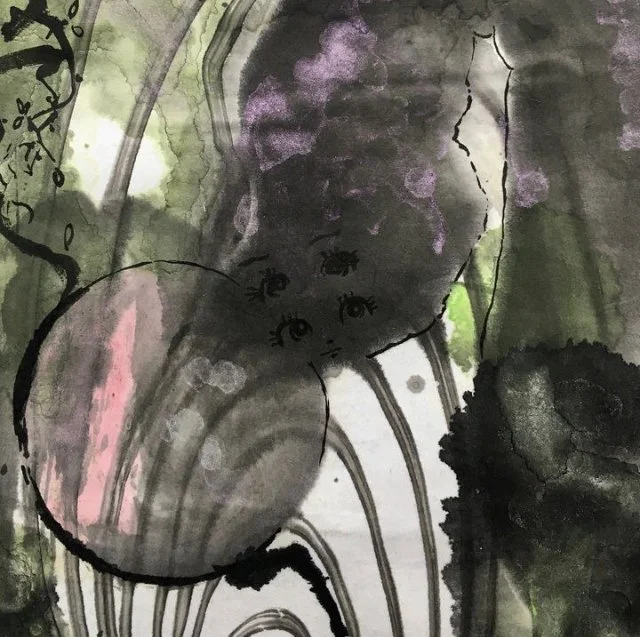IKEBANA
Ikebana: The Japanese art form of flower arranging.
Ikebana begins with an emotional involvement with nature for selecting the ideal material from a countless variety of plants arranged in a vessel in order to appreciate their beauty- but it is much more than just arranging flowers. Like the tea ceremony, Ikebana attaches a greater study of formal etiquette and fosters self reflection, using natural materials to express inner awareness.
Eastern philosophy attaches a deep appreciation and understanding for nature itself and the nature of causality. Within my understanding of Eastern philosophy, life and death are discussed symbiotically as a non dualistic belief because you can’t have life without death and death without life.
The process of coming to an end is a constant reminder of the preciousness of time, making each moment in time more valuable than the last. Therefore in contrast to fresh flowers and plants, I find using dead or drying flowers carry a type of grace that also celebrates life just as much as one in bloom.







“The slouching stem of a faded flower is like a slow sigh of relief from a long inhale of life.” May 23, 2018
Vase by Bruce Warall.
Free style (jiyuka) / Abstract style of Ikebana
“Perhaps the greatest change that has occurred in Ikebana in recent decades is a shift from the purely naturalistic approach to one that might be described as expressionistic. Instead of centering their designs on the innate beauty of flowers and plants, many modern flower arrangers choose to express their own thoughts and feelings in any way that seems effective, regardless of whether they allow their natural materials to retain their original shapes and colours. As a result, the relatively strict forms of classical flower arrangement have given way to freer, abstract forms that are felt to accord more completely with our own changing times.”
- Shozo Sato
11:44 pm
11:49 pm
Note to self…
“Ikebana arrangements, accordingly, are expected not only to establish a link between man and nature, but to create a mood or atmosphere appropriate to the season and even to the occasion. Actually, the symbolism and imagery of flowers in Japanese literature and psychology are far more complicated than this would suggest, and a thorough discussion is properly the subject of another book. The Western student of Ikebana, however, should keep in mind that to the Japanese viewer a flower of plant may have many connotations that would be alien to the Western mind.” - Shozo Sato
October 2, 2018
Accidental moon.
“When nature and chance fall into place, then you have a work of art because nature and chance doesn’t always move the way you want it to.”
- Shuichi Kato
The Art of Arranging Flowers, page 17 - Shozo Sato
A brief history.
The Japanese art of Ikebana started as a form of prayer in which flowers were placed on Buddhist altars in temples during the sixth century. Over the years, new techniques and approaches for placing flowers in vases developed and flower masters eventually established theories for their practices. Traditionally, schools of Ikebana follow a set of guidelines and principles using carefully picked fresh flowers and plants to represent the universe within 3 main stems of arrangement placed in a vessel.


















